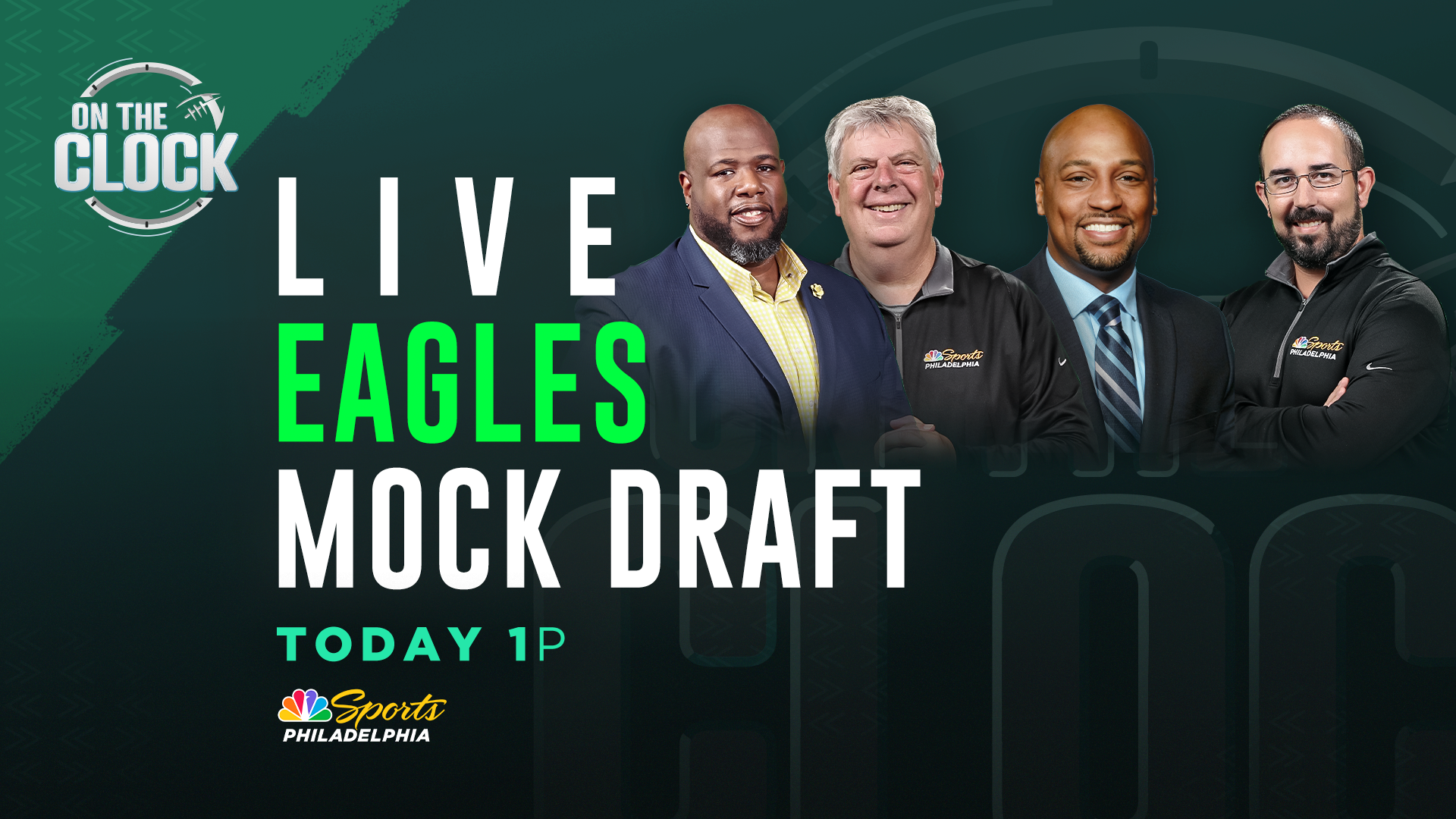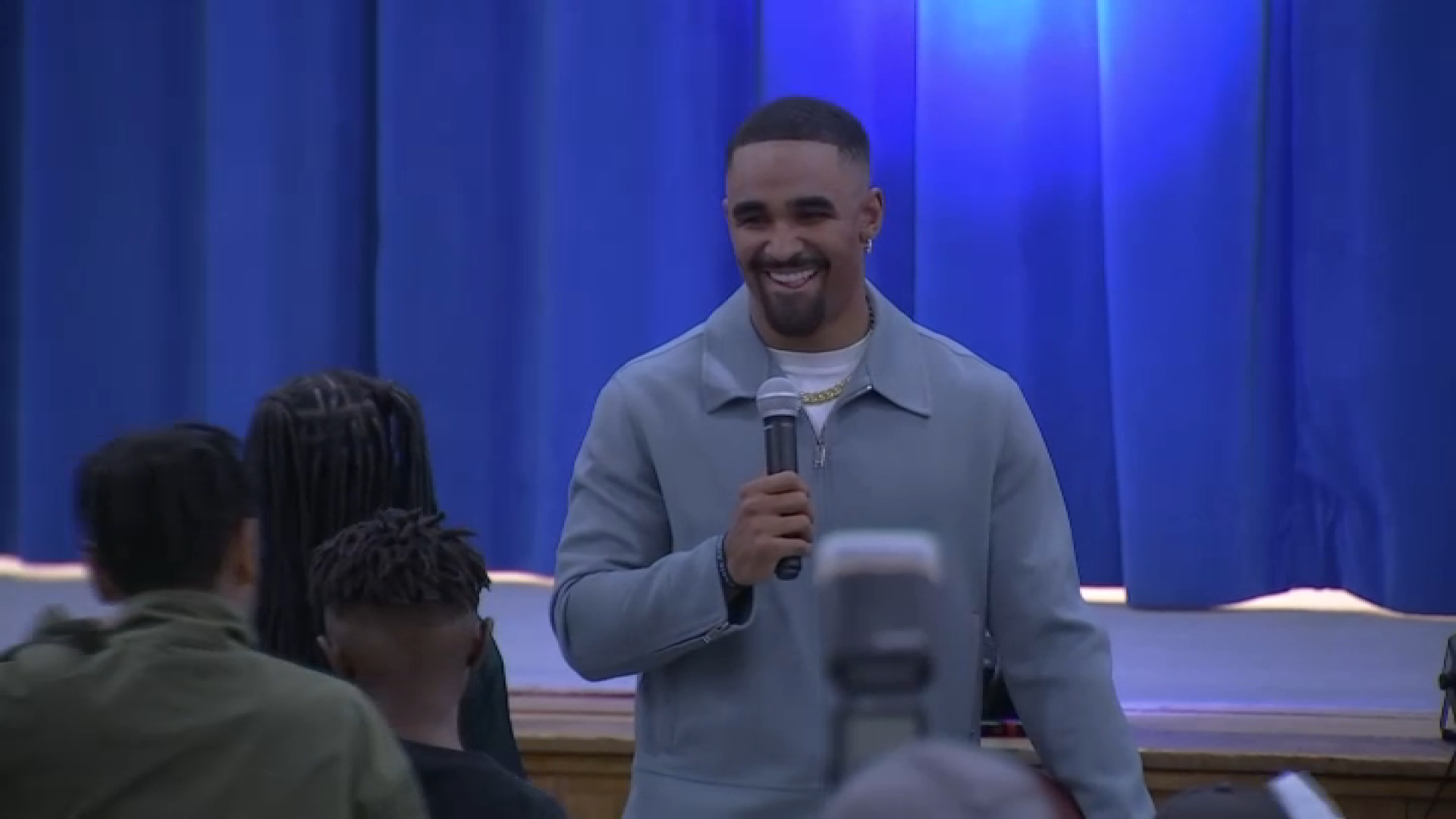The dust has settled.
The Eagles didn’t have a very eventful first few weeks of free agency but they pulled themselves out of salary cap hell by restructuring several contracts and even signed a few new free agents and kept one.
After all that, let’s take a deep breath and answer some of the most important questions about their salary cap situation in early April:
Stay in the game with the latest updates on your beloved Philadelphia sports teams! Sign up here for our All Access Daily newsletter.
How much cap space do the Eagles have?
After all the restructures and the signings (and Marquise Goodwin’s reverting back to the 49ers), the Eagles are left with $6,431,321 in available cap space for 2021, according to the up-to-date numbers from the NFLPA.
Remember, the Eagles were significantly over their adjusted cap number just a month or so ago, so it has taken some heavy lifting to get to this point. The Eagles restructured or extended the contracts of several veterans, including Brandon Graham, Brandon Brooks, Javon Hargrave and Darius Slay.
Right now, the Eagles have 68 current contracts (the roster limit is 90). But in the offseason, the cap number for teams is determined by the top 51 contracts.
NFL
As a reminder, the league-wide cap in 2021 is $182.5 million but the Eagles carried over $22.8 million from the 2020 season, which left them with an adjusted salary cap of $207 million. They have just over $200.6 million with their top 51 contracts, which is how we figure out their available cap space.
Can the Eagles sign more free agents?
Sure, the Eagles can still sign players in the second and third waves of free agency. In fact, I’d be surprised if they didn’t at some point. The Eagles still have some pretty glaring needs, including receiver and cornerback.
And the Eagles have been structuring contracts with the goal of limiting cap hits for this tight 2021 season. They can even do that on one-year deals by adding voidable years at the end. Yes, it pushes dead money into the future but it helps now.
As a reminder, here are the cap hits for the four players they’ve signed during free agency:
Anthony Harris: $1,592,000
Joe Flacco: $1,560,000
Andrew Adams: $987,500
Hassan Ridgeway: $950,000
That Harris deal is a $4 million contract but the Eagles structured it in a way that they were able to fit him in. Now, that obviously wasn’t one of the major deals around the league this offseason, but the Harris signing was still relatively significant and proves the Eagles can sign guys and make it work.
What will it cost to sign the rookie class?
Yes, the Eagles will have enough money to sign their rookie class. And if they didn’t sign any other free agents, they’d have enough to do it right now.
According to OverTheCap, the Eagles’ estimated rookie pool is just over $11.5 million but the estimated cap space for their 11 picks comes to just over $4.3 million. Remember, it’s just the top 51 cap hits that count during the offseason, so there are rookies who won’t count. And even the ones who do, take up a space that is currently occupied by another contract.
How else can they open cap space?
The Eagles have enough money to sign their rookie class and potentially sign another free agent or two. But things might get tight if they decide to do both. Fortunately, there are a few ways they can still open up more cap space in 2021:
1. They just wait. On June 1, the Eagles will gain $4 million in cap space for this season from the releases of Alshon Jeffery and Malik Jackson. After restructuring their contracts, the Eagles released both with post-June 1 designations (they only get two), which means they’ll lose their base salaries at that date. So for now, the Eagles have to carry $7.59 million for Jeffery and $5.61 million for Jackson. But on June 1, their $2 million base salaries come off the books. Instant savings.
2. The Eagles can trade Zach Ertz. Earlier this offseason, it appeared like that trade was imminent but it hasn’t happened yet. Ertz is scheduled to have a cap hit of $12.72 million in 2021. If the Eagles trade (or cut) Ertz, they will save $4.92 million in cap space, leaving $7.7 million in dead cap space. (If they trade him after June 1, they’d save $8.5 million in cap space this season, which would leave over $3.5 million in dead money next year.)
3. The Eagles have a couple more moves in their back pocket if they need them. The Eagles reportedly began to restructure Lane Johnson’s contract before the new league year began on March 17 but stopped when they didn’t need that space anymore. But Johnson still has a cap hit of $17.8 million in 2021 and it would be easy to restructure that to save a nice chunk. Same goes for Fletcher Cox and his $23.9 million cap hit. Those are the two highest cap hits for players still on the roster. (Carson Wentz has a dead cap hit of $33 million in 2021.)
What’s the future look like?
The Eagles will be in a much better cap situation in 2022, even with all of these cap-saving measures and dummy years on contracts this offseason. A big reason is that Wentz will come off the books in 2022.
Sure, there will be some dead money left behind. Harris will leave $2.4 million, Flacco will leave $1.94 million, etc. But even with all that, the Eagles will be better than OK. Without some of those total dead charges, the Eagles currently have 38 contracts with a team cap of $167.7 million for 2022. That’s well under this year’s league-wide figure of $182.5 million and that league-wide figure is expected to rise exponentially in the coming years as we move away from the COVID-19 pandemic and as new TV money rolls in.
Subscribe to the Eagle Eye podcast:
Apple Podcasts | Google Play | Spotify | Stitcher | Art19 | Watch on YouTube


